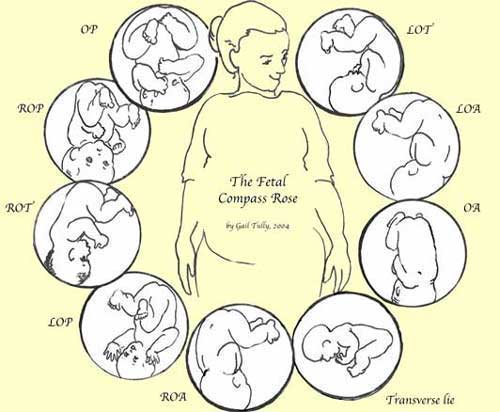Swaddling
It is the cornerstone of calming to keeps baby from spiraling out of control and helping baby pay attention to what we are doing to calm him.
Besides, wrapping our baby very snugly in a blanket, to recreate the warm and secure feeling of the mother’s womb. The snugger, the better! Swaddling our baby too loosely can result in our baby breaking free of the swaddle, or even just further irritating them. Because newborns tend to unconsciously jerk and flail their arms and legs around, the swaddle allows the baby to remain calm and aids them in falling asleep and staying asleep.
How to swaddle a baby????
- recommended technique called DUDU wrap.
Doing the DUDU....
- to help us remember the DUDU technique, try singing a little song as we do it:
DOWN...tuck...snug
UP....tuck...snug
DOWN....a smidge...hold
UP....across...snug.
# REMEMBER !!!!!
- avoid overheating baby
- avoid loose blankets - swaddling needs to be snug
- do not let the blanket touch the baby's neck or cheek
- swaddle with the baby's arms tightly down their sides is the way to go (except for PREEMIES)
HOW TO SWADDLE BABY?????
first thing you need a square flat blanket...not too thin and not too thick...ngam ngam hoo...
you will want to lay the blanket out completely flat to begin with. do it on flat large surface...and never leave your baby unattended on a taller surface because they could roll off.
Then flip down the corner to make an area for baby's head. this corner can be flipped inwards to prevent it from flapping around while you're holding the baby or it can be flipped outward and used to semi-cover the back of the baby's head.
Lay the baby down with the back of their head centered on the flipped corner. The top of the blanket should be at the level of the top of baby's shoulder unless you intend to cover their heads.
Picture No:3
- Down. Just as swaddling is the cornerstone of calming, this first DOWN is the cornerstone of swaddling. It must be done well or the wrap will unravel. Hold your baby’s right arm straight against his side, grab the blanket three to four inches from his right shoulder, and pull it very snugly down and across his body. (The blanket should look like half of a V-neck sweater.)
Tuck . Keeping the blanket taut, finish pulling it all the way down and tuck it under his left buttocks and lower back. This anchors the wrap.
Snug . While firmly holding the blanket against his left hip (with your left hand), grab the top edge of the blanket next to his unwrapped left shoulder and tug it very,very snug. Pull the blanket until there is absolutely no slack
around your baby’s right arm and the fabric is stretched to the max.
After this first “DOWN…t u c k … s n u g,” the baby’s right arm should be held so securely against his side that he can’t bend his arm up, even if you let go of the blanket. Don’t be surprised or lose confidence if your baby suddenly cries louder when you pull the blanket tight. You’re not hurting him!
Picture No:4
- Up. Now, straighten his left arm against his side and bring the bottom corner straight up to cover the arm. The bottom blanket point should reach up and over his left shoulder. It’s okay if his legs are bent; that’s how babies are
positioned in the womb. But, be sure his arms are s t r a i g h t.If they’re bent, he’ll get out of the wrap as fast as you can say,“Oops, he did it again!” And, he’ll cry even more.
Tuck.Tuck this corner tightly under his whole left arm with your right hand. Put your left hand on his straight left arm so it’s pressed against his body.
Snug. While your left hand still holds his left arm down,use your right hand to grab the blanket three inches from his left shoulder and s n u g it with a
continuous pull (stretch it as much as possible). This removes any slack next to his right arm.
Picture No:5
- Down. Still holding the blanket three inches from his left shoulder, pull the blanket taut and d o w n,but only a smidgen.
This DOWN should bring only a smidgen of fabric over his left shoulder to his upper chest, like the second half of the V-neck sweater. (A mistake parents often make with the DUDU wrap is to bring this down fold all the way to their baby’s feet…remember, it’s just a smidgen.)
Hold. Using your left hand, hold that small fold of blanket pressed against his breastbone, like you are holding down a ribbon while making a bow.
Picture No:6
-Up. As your left hand holds that fold, grab the last free blanket corner with your right hand and pull it firmly,straight out to your right. This will get every last bit of stretch and slack out of the wrap you’ve done so far. And, without
releasing the tension, lift that corner in one smooth motion,up and …
Across. Bring it tightly a c r o s s his waist and wrap it around
his body like a belt. The belt should go right over his forearms, holding them snugly down against his sides.
Snug. The finishing touch of the DUDU wrap is to snug
the “belt” by giving it one last tight pull to remove any slack.
Then tuck the end into the blanket as shown in the diagram.
This last tight snug and tuck keeps the whole swaddle
from popping open.
SWADDLING WORRIES !!!!!!!!!
- swaddling is old - fashioned - yes but it really works!
- babbies will be uncomfortable with their arms tightly down their sides - arms-down position is NOT uncomfortable in fact, babies sleep longer when bundled this way
- babies will get spoiled or dependent - not so. since baby was :wrapped up" 24 hours a day when inside the womb. Once he is 4 months old, he will no longer need to be wrapped
- wrapping makes baby feel trapped - not true. newborns love being confined, and when they're feeling out of control, they need help to restrain their arms and legs.
- tight bundling might interfere with baby's ability to learn about the world - of course baby needs his hands unwrapped sometimes so he can practice using them. but when he is crying, you need to calm him down by wrapping him. In fact, he will pay better attention when his arms are not constantly in motion.
your baby will look like this after you swaddle him.....
so...we finish with swaddling...next is side /stomach position...






